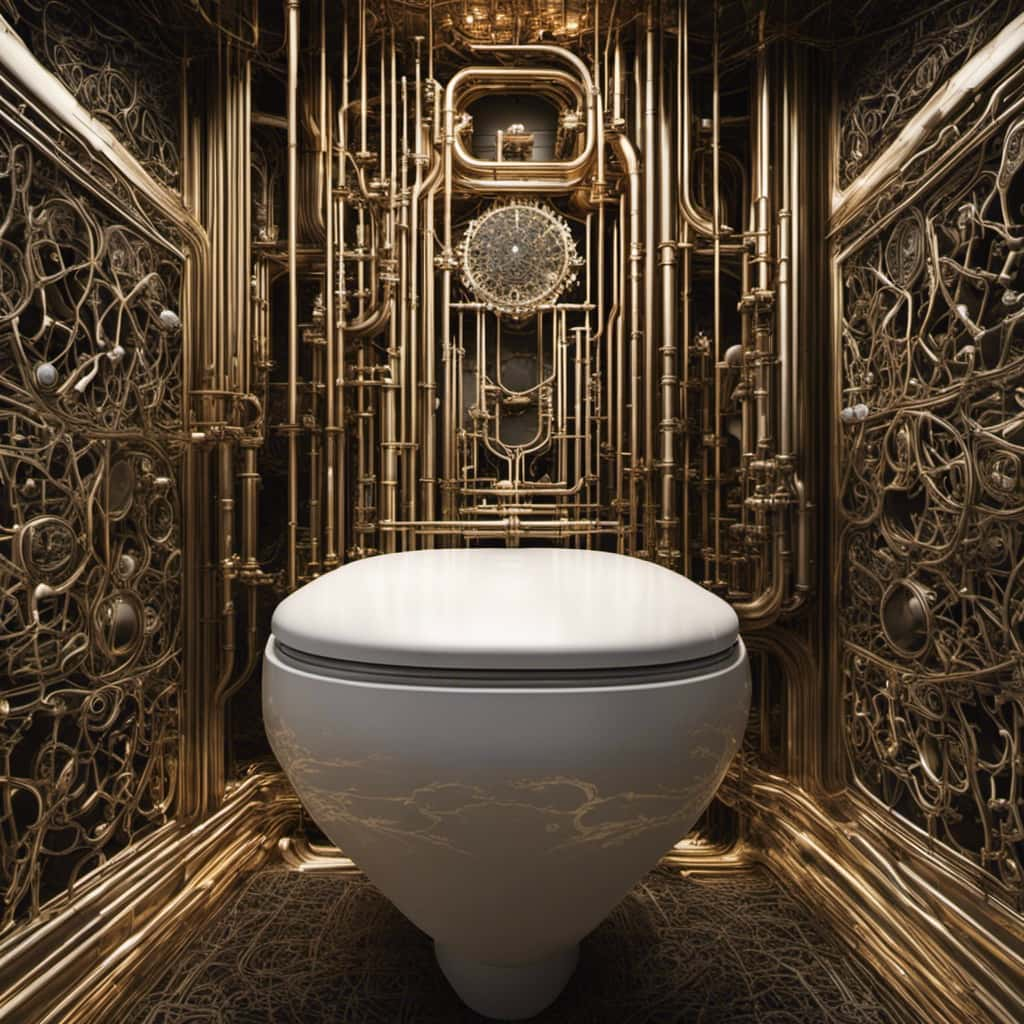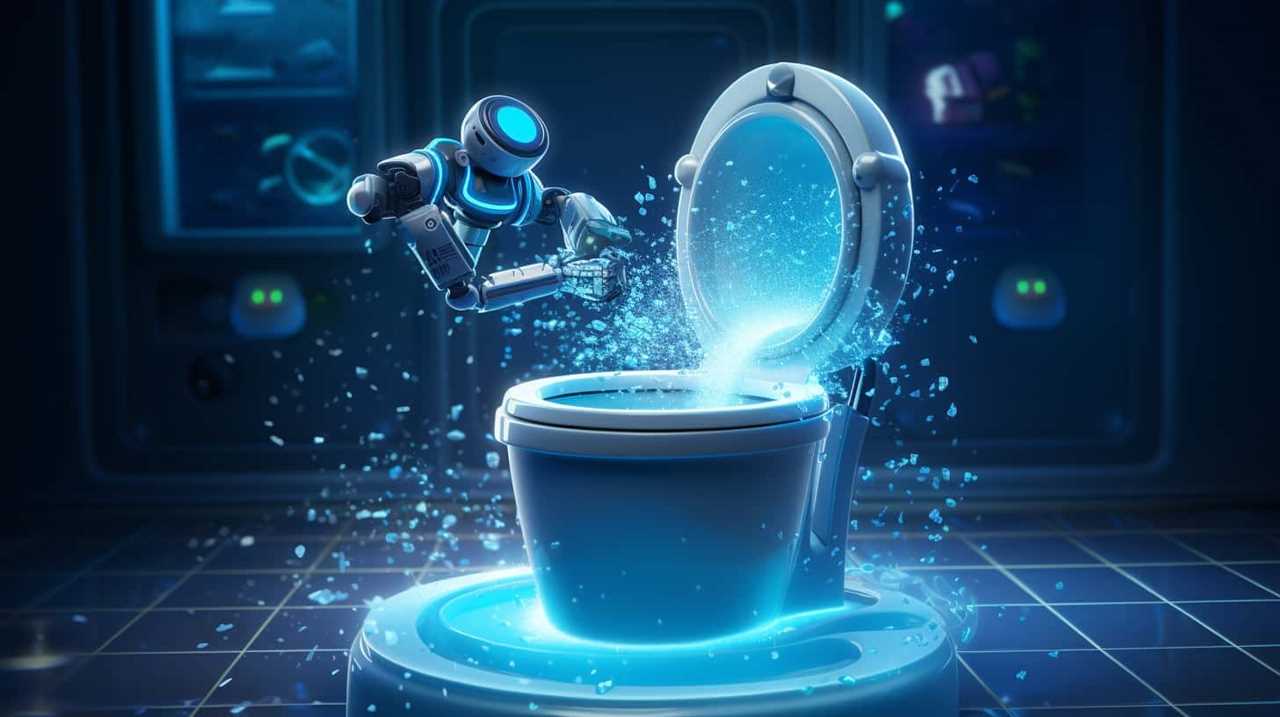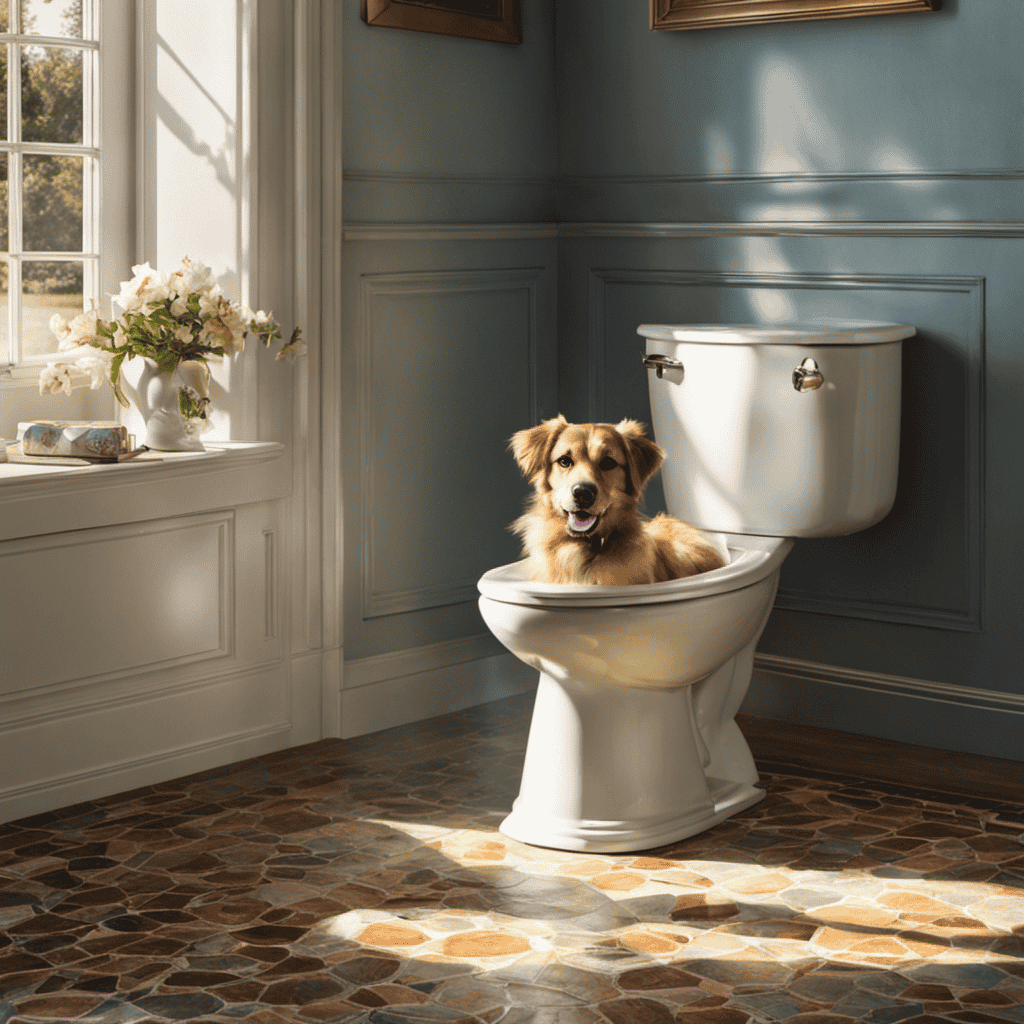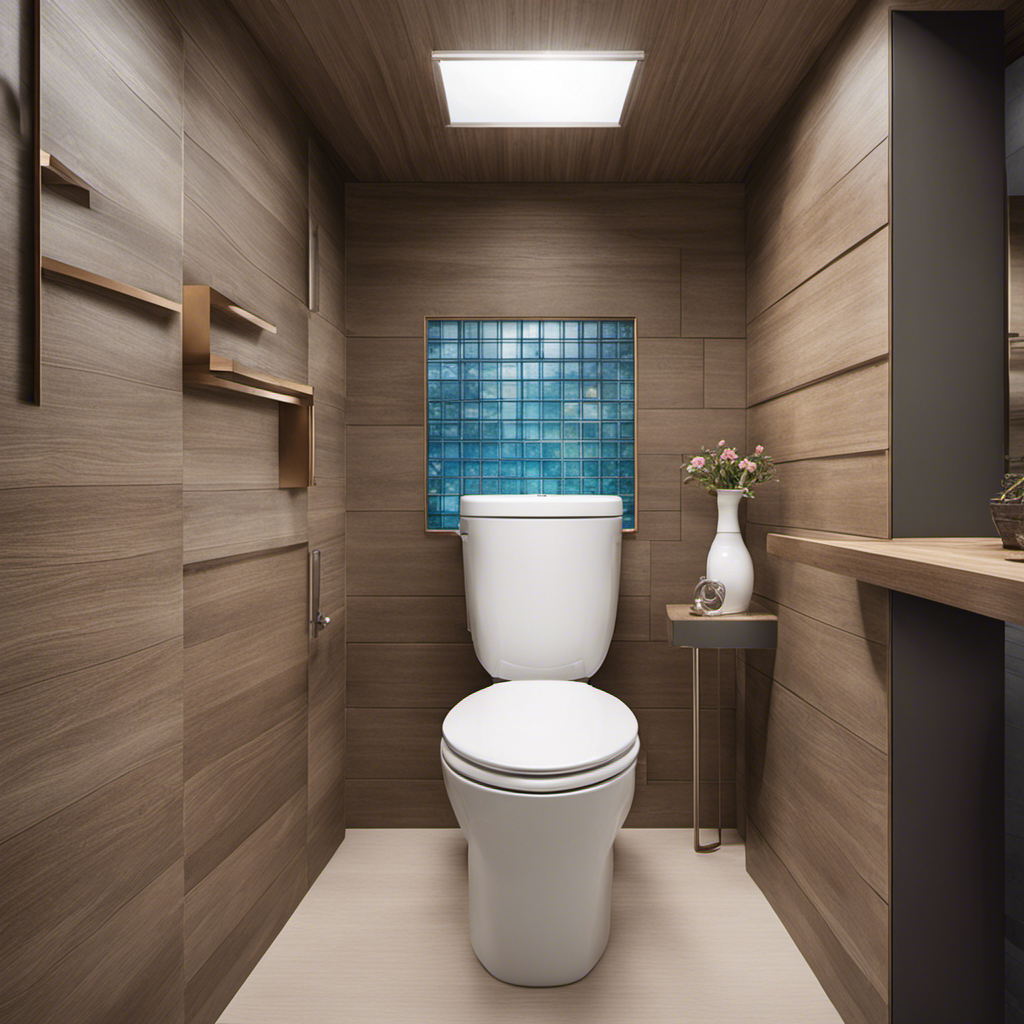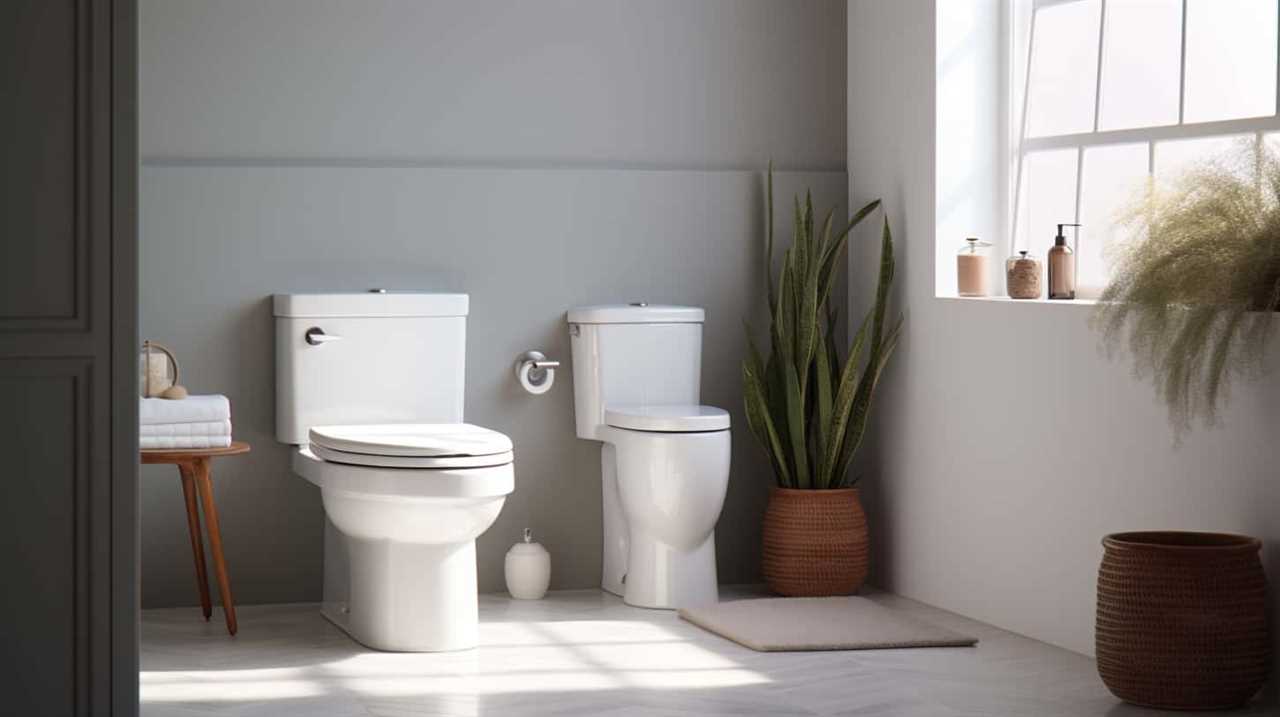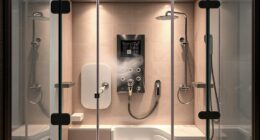We’ve all found ourselves in this situation – staring at a blocked toilet, pondering what steps we’ll need to take to resolve the issue.
But fear not, because we’re here to guide you through the steps of unblocking that stubborn clog.
In this article, we’ll show you the necessary tools to gather, how to assess the severity of the clog, and the various methods you can try to unclog your toilet.
So let’s get started and master the art of unblocking a clogged toilet!

Key Takeaways
- The necessary tools for unblocking a clogged toilet are a plunger, a toilet auger or snake, rubber gloves, and a bucket.
- Assessing the severity of the clog is crucial in determining the appropriate removal technique.
- Plunging the toilet vigorously can help create suction and dislodge the blockage.
- If the clog persists or uncertainty arises, consider seeking professional plumber assistance.
Gather the Necessary Tools
We usually start by gathering the necessary tools to unblock a clogged toilet. Unclogging a toilet may seem like a daunting task, but with the right tools and knowledge, it can be a relatively simple process. Before we begin, let’s discuss some common causes of toilet clogs.
One of the main culprits is flushing excessive amounts of toilet paper or flushing items that shouldn’t be flushed, such as wipes or feminine hygiene products. Another common cause is a buildup of mineral deposits or debris in the pipes.
Now that we understand the causes, let’s move on to the tools needed for the job.
The first tool you’ll need is a plunger. A plunger is essential for creating suction to dislodge the clog. Make sure you have a plunger with a flange, as this will provide a better seal.

Next, you’ll need a toilet auger or snake. This tool is used to break up stubborn clogs that the plunger can’t handle. It’s a long, flexible wire with a corkscrew-like end that can be inserted into the toilet drain to break up the clog.
Finally, it’s a good idea to have rubber gloves and a bucket on hand to protect yourself and catch any excess water that may spill.
Now that we’ve our tools ready, let’s move on to the next step in unblocking a clogged toilet.
Assess the Severity of the Clog
Now that we’ve gathered the necessary tools, let’s assess the severity of the clog. This step is crucial in determining the appropriate clog removal technique to use.

If the clog appears to be minor, we can attempt to resolve it ourselves using basic methods such as plunging or using a toilet auger.
However, if the clog seems severe or persists despite our efforts, it might be necessary to seek professional plumber assistance to ensure a thorough and effective resolution.
Clog Removal Techniques
To assess the severity of a clog, start by using a plunger to attempt to remove the blockage. Follow these steps to properly evaluate the clog and determine the appropriate course of action:
- Plunge the toilet: Place the plunger over the drain hole and vigorously push and pull to create suction. This may help dislodge the blockage and allow water to flow freely again.
- Observe for toilet overflow: If plunging causes the water level to rise and overflow, the clog may be more severe. In this case, stop plunging to prevent further water damage and consider alternative methods.
- Prevent future clogs: To avoid future clogs, be mindful of what you flush down the toilet. Avoid flushing large amounts of toilet paper or items that aren’t designed to be flushed.
By following these steps, you can determine the severity of the clog and take appropriate action. If the clog persists or if you’re unsure about how to proceed, it may be time to seek professional plumber assistance.

Now that you have assessed the severity of the clog, let’s explore when it’s necessary to call in a professional plumber.
Professional Plumber Assistance
If the clog persists or if you’re unsure about how to proceed, it may be time to call in a professional plumber to assess the severity of the clog. Hiring a professional plumber has several benefits.
Firstly, they have the expertise and experience to accurately diagnose the problem and determine the best course of action. Additionally, they have access to specialized tools and equipment that can effectively remove even the most stubborn clogs.
The cost of hiring a professional plumber may vary depending on factors such as the severity of the clog and the plumber’s rates. However, the peace of mind and assurance that comes with knowing the job will be done correctly can outweigh the cost.
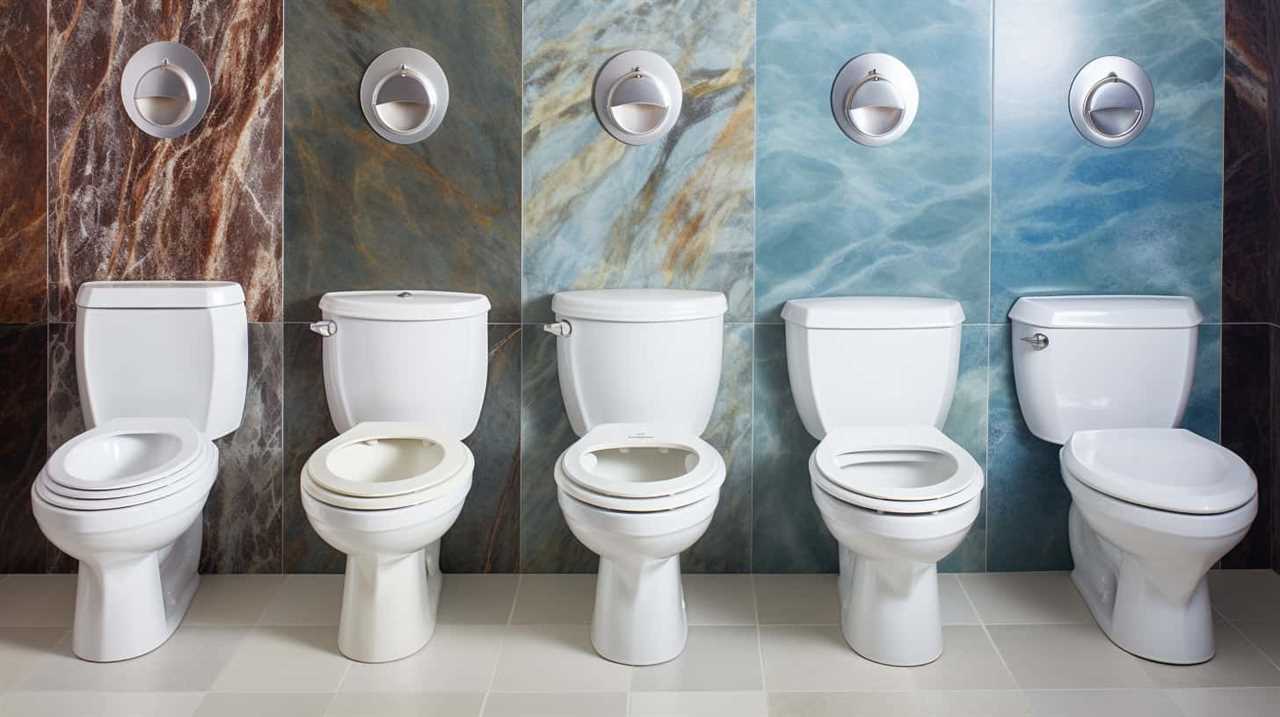
If you’re considering calling in a professional plumber, it’s important to weigh the potential benefits against the cost.
Now, let’s explore another method you can try before resorting to professional assistance – the plunger method.
Try the Plunger Method
To unclog a toilet, we can start by using the plunger method. This is a simple and effective technique that can often solve the problem without needing any additional tools or professional help. Here’s how you can use the plunger method to unclog your toilet:
- Position the plunger: Place the plunger over the drain hole in the toilet bowl, ensuring a tight seal. Make sure the plunger’s rubber cup covers the entire opening to create a vacuum.
- Create suction: Push the plunger down gently, then pull it up quickly to create suction. Repeat this motion several times, maintaining a good seal with the toilet bowl.
- Release the suction: After a few attempts, release the suction by quickly pulling the plunger up. This may cause water to rush into the drain, hopefully dislodging the clog.
By following these steps, you can often clear a clogged toilet using the plunger method.

However, if the clog persists or you prefer to try other methods, there are plunger alternatives available, such as using a toilet auger or snake. These tools can be effective in removing stubborn clogs or reaching deeper blockages.
Additionally, to prevent future clogs, it’s important to avoid flushing items that can easily cause blockages, such as paper towels, sanitary products, or excessive amounts of toilet paper.
Now let’s move on to the next section, where we’ll discuss how to use a toilet auger or snake to unclog a stubborn toilet.
Use a Toilet Auger or Snake
Now, let’s move on to the second method for unclogging a toilet by using a toilet auger or snake. A toilet auger, also known as a plumbing snake, is a long, flexible tool designed to reach deep into the toilet drain and break up any clogs. Here’s how to use it effectively:

- Start by putting on protective gloves and laying down towels or newspaper to catch any water that may splash out during the process.
- Insert the auger into the toilet bowl, making sure the tip is facing the drain. Gently push the handle in a clockwise motion while applying steady pressure.
- Continue pushing the auger until you feel resistance. This indicates that you have reached the clog.
- Rotate the auger counterclockwise to break up the clog. Be patient and avoid using excessive force, as this could damage the toilet.
- Once the clog is cleared, carefully remove the auger from the toilet bowl. Flush the toilet to ensure proper drainage.
Toilet clog prevention is key to avoiding future issues. Common causes of toilet clogs include flushing excessive amounts of toilet paper, feminine hygiene products, or non-flushable items. Remember to only flush toilet-friendly materials and dispose of other items properly.
Regular maintenance, such as routine cleaning and using enzyme-based drain cleaners, can also help prevent clogs.
Consider Using a Homemade or Commercial Drain Cleaner
For this method, we can consider using a homemade or commercial drain cleaner to tackle the clog. Here are three options to choose from:
- Homemade Drain Cleaner: One eco-friendly option is to create your own drain cleaner using common household ingredients. Mix 1 cup of baking soda with 1 cup of vinegar and pour it down the clogged toilet. Let it sit for about 30 minutes, then flush with hot water. The baking soda and vinegar will react, creating a foaming action that helps break down the clog.
- Commercial Drain Cleaner: Another option is to use a commercial drain cleaner. Look for a product that’s specifically designed for toilets and labeled as safe for septic systems. These cleaners typically contain chemicals that dissolve the clog, allowing it to be flushed away. Follow the instructions on the packaging carefully and use protective gloves to avoid skin irritation.
- Eco-Friendly Alternatives: If you prefer to use eco-friendly options, look for drain cleaners that are labeled as environmentally friendly or biodegradable. These cleaners often use natural enzymes and bacteria to break down the clog without harming the environment. Be sure to read the instructions and warnings before using these products.
Once you have tried the homemade or commercial drain cleaner, assess whether the clog has been cleared. If the toilet is still not flushing properly, it may be time to call a professional plumber for further assistance.

Know When to Call a Professional Plumber
When it comes to dealing with a clogged toilet, there are instances where it’s best to call a professional plumber. Knowing when to seek professional help can save you time, money, and potential damage to your plumbing system.
Signs that indicate the need for a professional plumber include recurring clogs, multiple clogged fixtures, sewage backup, and foul odors.
DIY or Professional
We can determine whether to attempt fixing a clogged toilet ourselves or call a professional plumber. When deciding between a DIY approach or hiring a professional, it’s important to consider factors such as the complexity of the clog, our level of expertise, and the cost comparison. Here are three key points to help us make an informed decision:
- DIY vs. Professional: Assess our skills and knowledge in plumbing repairs. If we’ve experience and confidence in handling toilet clogs, attempting a DIY fix may be a cost-effective option. However, if we lack the necessary expertise or the clog seems severe, it’s best to call a professional plumber.
- Cost Comparison: Evaluate the potential costs involved. DIY fixes typically require basic tools and materials, which can be relatively affordable. On the other hand, hiring a professional plumber may incur higher upfront costs, but they can provide a guarantee for their work and ensure long-term solutions.
- Complexity of the Clog: Consider the severity and complexity of the clog. Simple clogs caused by minor blockages can often be resolved with DIY methods such as using a plunger or a plumbing snake. However, if the clog persists or if there are underlying issues like tree roots or damaged pipes, it’s advisable to seek professional assistance.
Signs of Plumbing Emergencies
How can we identify the telltale signs of a plumbing emergency that require the immediate attention of a professional plumber? It is crucial to recognize these signs early on to prevent further damage and costly repairs. Here are some common plumbing problems and their warning signs:

| Common Plumbing Problems | Warning Signs |
|---|---|
| Leaking pipes | Damp spots on walls or ceilings, musty odor, water discoloration, decreased water pressure |
| Burst pipes | Water gushing out, loud banging noises, sudden decrease in water pressure |
| Clogged drains | Slow drainage, gurgling sounds, unpleasant odors |
| Water heater malfunction | No hot water, strange noises, water leaks |
| Sewer line issues | Multiple drains backing up, foul odor, gurgling sounds |
To prevent clogged toilets, avoid flushing non-flushable items like wipes, feminine products, and excessive amounts of toilet paper. Regular maintenance, such as using a plunger or drain snake, can also help keep your toilets running smoothly. Remember, if you notice any of these signs, it’s best to call a professional plumber immediately to address the issue and prevent further damage.
Frequently Asked Questions
Can I Use a Plunger on a Severely Clogged Toilet?
Using a plunger on a severely clogged toilet is a common and effective method. It creates pressure that can dislodge the blockage.
However, if the clog is particularly stubborn, there are alternative methods for unclogging a toilet. These include using a toilet auger or a chemical drain cleaner.
It’s important to follow the instructions carefully and take safety precautions. If the problem persists, it may be best to call a professional plumber.

What Are the Potential Risks of Using a Commercial Drain Cleaner?
When considering the potential risks of using a commercial drain cleaner, it’s important to be aware of the chemicals involved. These cleaners often contain harsh substances that can be harmful if not used properly.
Additionally, they may not effectively remove the clog and could cause damage to your plumbing system.
It’s advisable to explore alternatives such as using a plunger or a plumbing snake, which can be safer and more effective in unblocking a clogged toilet.
How Do I Know if the Clog Is Severe Enough to Require a Professional Plumber?
Determining the severity of a clogged toilet is crucial before deciding whether to call a professional plumber.
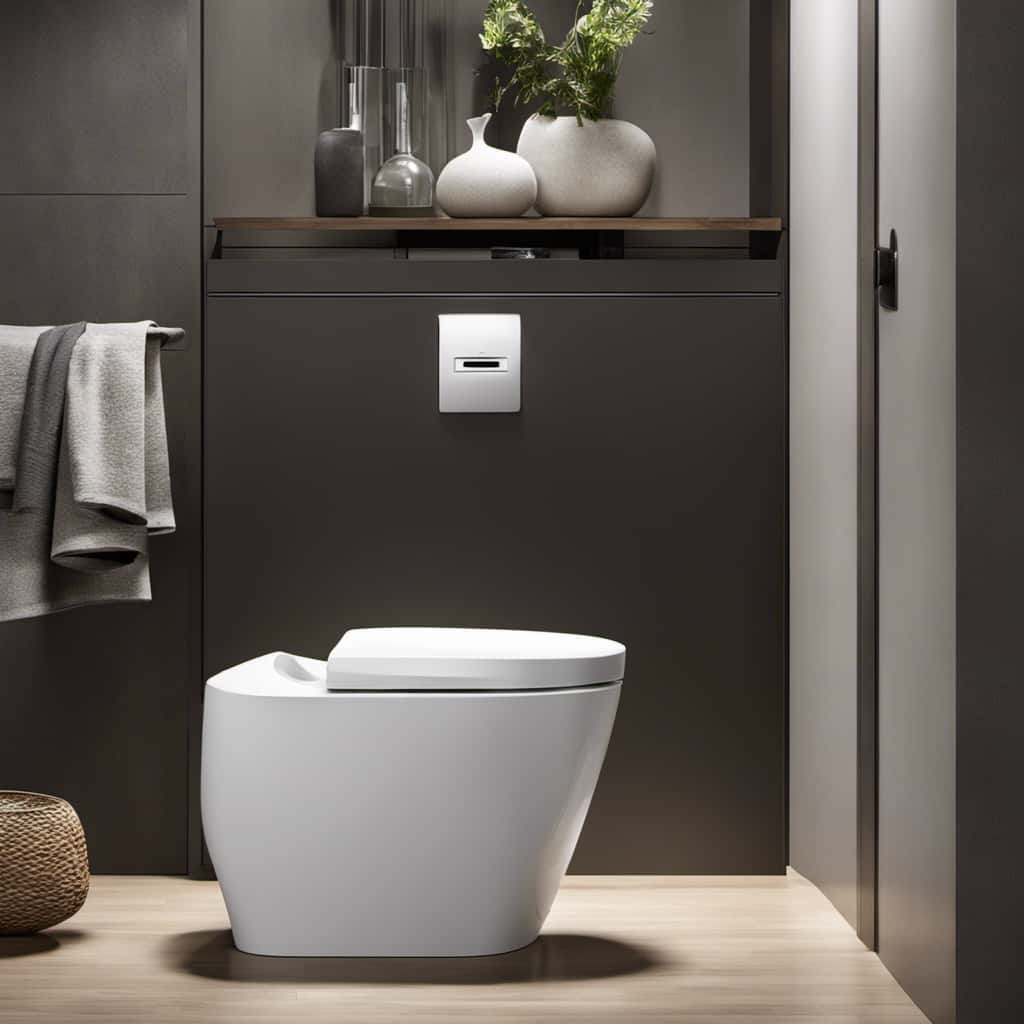
We start by checking for common signs such as slow draining and water backup.
If DIY solutions like using a plunger or a drain snake prove ineffective, it may indicate a more severe clog that requires expert intervention.
Are There Any Homemade Drain Cleaner Recipes That Are Safe for Toilets?
Homemade drain cleaner recipes can be a safe and effective way to unclog a toilet. Mixing baking soda and vinegar creates a natural cleaning solution that can break down the clog.
Another option is using a combination of hot water and dish soap. Simply pour the mixture into the toilet bowl and let it sit for a few minutes before flushing.
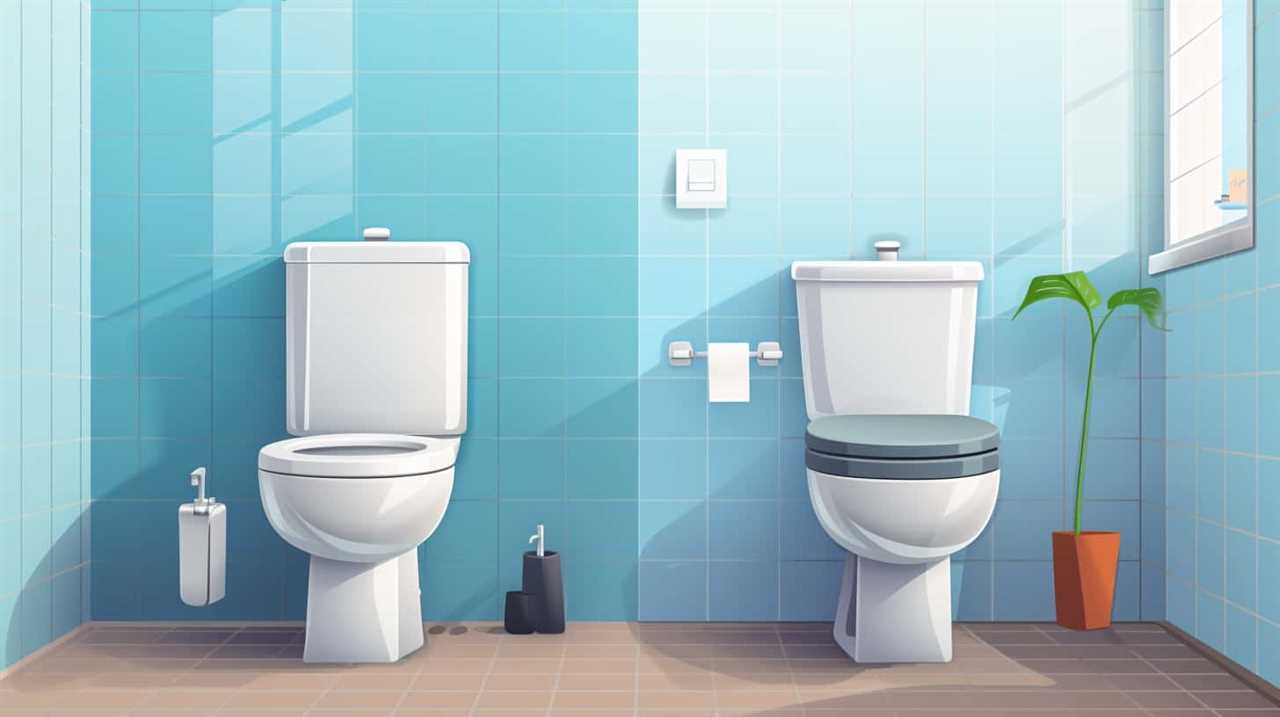
These methods can be a cost-effective alternative to calling a professional plumber.
Can I Use a Toilet Auger or Snake if I Don’t Have One Specifically Designed for Toilets?
Toilet auger alternatives can be used if you don’t have a specific one for toilets. However, it’s important to note that using a toilet auger or snake not designed for toilets may cause damage to the porcelain.
Instead, consider these DIY toilet clog solutions. One interesting statistic is that 85% of toilet clogs can be cleared using a plunger. Start by ensuring there’s enough water in the bowl to cover the plunger, then plunge vigorously to create pressure and dislodge the clog.
Conclusion
In conclusion, unclogging a toilet may seem like a daunting task, but with the right tools and techniques, it can be easily resolved.

As you plunge the toilet, imagine the water flowing freely again, relieving the blockage and restoring the bathroom to its pristine state.
With a toilet auger or snake, envision the obstacle being effortlessly removed, allowing the water to flow smoothly.
Remember, if all else fails, don’t hesitate to call a professional plumber for assistance.
